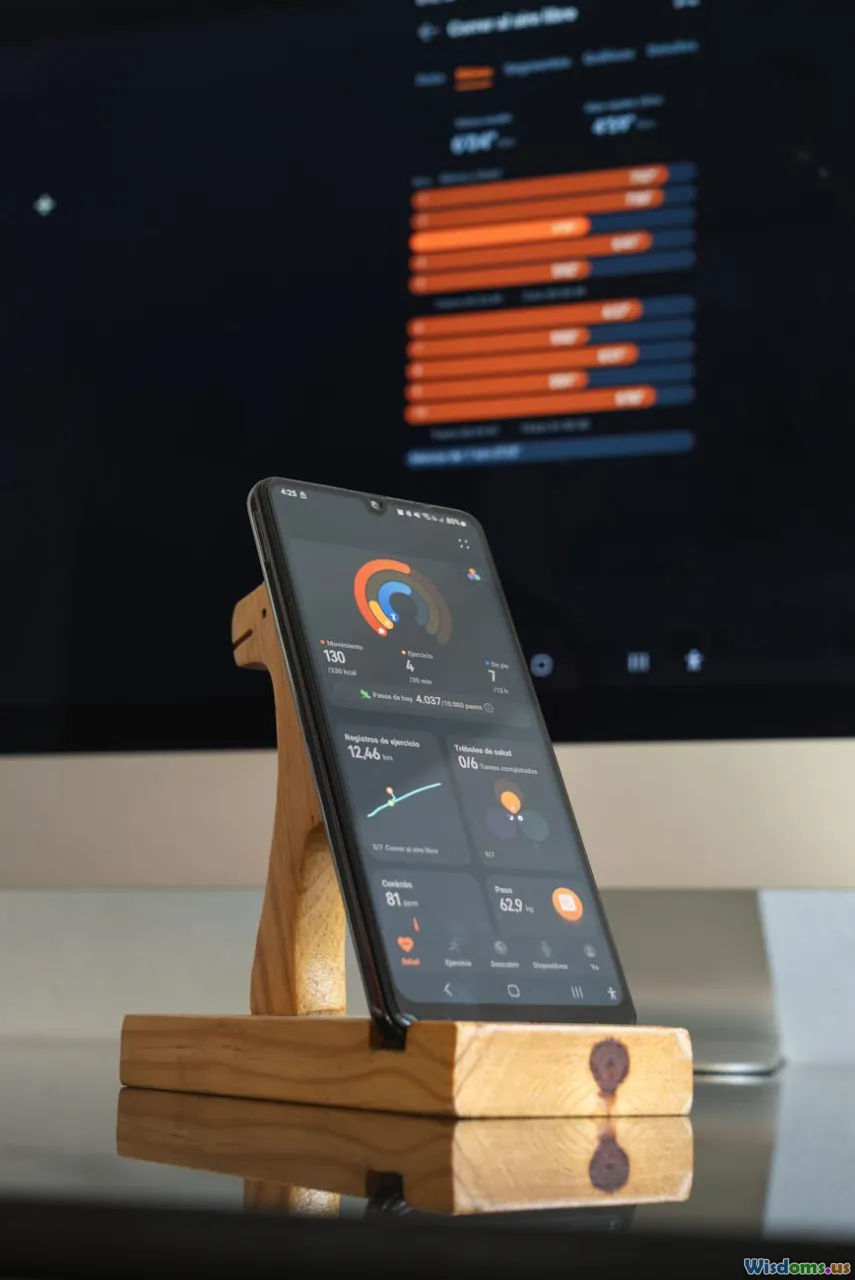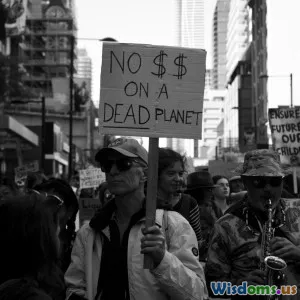
Why Global Social Movements Succeed Where Nations Fail
33 min read How transnational movements outmaneuver state limitations using networks, narratives, and platform power—achieving policy shifts and norm change where governments stall. (0 Reviews)
Every few years, the world gathers for a grand attempt at solving a shared problem. Flags line up behind microphones, negotiators haggle into the night, and a press conference promises progress. Then the headlines fade, emissions rise, and treaty language collects dust.
Meanwhile, outside the conference halls, movements march, litigate, set standards, and pressure markets. The result is often messy and uneven, but unmistakable: norms shift, products change, companies pivot, and, eventually, governments follow. When the target is a global commons challenge or a cross-border harm, social movements frequently succeed where nations stall. Not because states do not matter—they do—but because movements operate with different incentives, tools, and timelines.
This is an analysis of how that advantage works, with grounded examples and a playbook you can adapt to your own cause.
Why movements win when states stall

The simplest explanation is that states must agree, while movements only need to persuade. Multilateral deals require consensus or large majorities among countries with divergent interests, domestic veto players, and short electoral clocks. Movements, by contrast, can focus on leverage points: a small set of firms, investors, or cultural gatekeepers that unlock outsized change. They do not need 193 flags—they need the right twenty banks, a few key retailers, one viral frame, or a precedent-setting court case.
Three structural dynamics tilt the field toward movements:
- Asymmetric incentives: Politicians face immediate costs for long-term global goods. Movements can mobilize people who value those long-term goods and translate moral urgency into pressure now.
- Flexibility and optionality: Movements can try many tactics in parallel—litigation, boycotts, shareholder activism, standards-setting—abandoning what fails and scaling what sticks. States are bound by protocol and precedence.
- Norm power: Movements change what is seen as legitimate. Once a practice is stigmatized or made uncool, even absent a treaty, compliance rises because markets and publics demand it.
Think of the Ottawa Treaty banning landmines. The campaign was propelled by a transnational civil society coalition, the International Campaign to Ban Landmines, that reframed the issue from military utility to civilian harm. That framing made landmines a reputational hazard. Even non-signatories, including major powers, shifted policies to align with the new norm because the cost of violating it grew.
The gridlock of nations: incentives, vetoes, and the commons

Global problems like climate change, tax competition, or antimicrobial resistance are classic collective action challenges. Nations face the temptation to free ride, and negotiations among them trend toward the lowest common denominator.
Researchers have described a world of multilateral gridlock, where four forces often stall treaties:
- Rising numbers: More states and stakeholders increase transaction costs.
- Multiplicity: More issues and forums fragment attention and dilute focus.
- Complexity: Interdependent systems defy simple fixes, and uncertainty makes states risk-averse.
- Veto points: Powerful states or domestic actors can block or water down outcomes.
Climate illustrates the pattern. The Paris Agreement achieved near-universal participation but relies on nationally determined contributions without hard enforcement. The result is a floor, not a ceiling, for ambition. The Doha Round at the World Trade Organization dragged for years under competing interests. A pandemic treaty has been difficult to finalize even after COVID-19 revealed the cost of uncoordinated responses. In each case, states operate under electoral cycles, geopolitical rivalries, and sovereignty concerns that punish unilateral concessions.
By contrast, the Montreal Protocol on ozone-depleting substances succeeded because the problem had a concentrated industrial base, viable substitutes, and compelling scientific evidence. Firms could switch refrigerants, and a small number of companies could be regulated and compensated. That lesson is not that treaties cannot work, but that their odds improve when the industrial and political geometry is favorable.
Movements exploit that geometry even when states cannot. They target concentrated nodes—industries with chokepoints, brand-sensitive actors, or a small set of financiers—so the effective coalition needed for change is much smaller than the set of states in a treaty hall.
The movement advantage: networks, speed, and optionality

Movements are not governments. That is their strength. They are networks that learn out loud, try things quickly, and scale what works. A few properties confer structural advantage:
- Distributed intelligence: Ideas and tactics travel across borders through peer networks—activists in one city can copy, remix, and improve a tactic used thousands of miles away.
- Portfolio of tactics: Movements do not have to pick a single instrument. They can pursue boycotts, lawsuits, shareholder resolutions, public shaming, standards creation, and culture-making at once. States tend to pick one instrument—hard law—and get stuck when it fails.
- Positive deviance: Early adopters prove feasibility. A city implementing a congestion charge, a retailer delisting harmful products, or a platform enforcing new safety rules makes it easier for others to follow.
- Nonlinear growth: Once norms pass a threshold, they spread rapidly through professional associations, industry groups, and cultural circuits.
Consider marriage equality. International treaties did not deliver it. Instead, a cascade of court cases, public campaigns, and cultural storytelling reframed the issue as one of love and fairness rather than abstract rights. Within a decade, legal and social norms shifted in dozens of countries.
On climate, the fossil fuel divestment movement leveraged the reputational sensitivity of universities, foundations, and faith institutions. By creating a moral narrative around stranded assets and climate justice, it pushed over a thousand institutions to commit to divestment, covering tens of trillions of dollars in assets under management. While not all commitments translate into immediate portfolio reallocation, the stigma and scrutiny changed the conversation in boardrooms and accelerated net-zero finance alliances.
Case studies: from landmines to life-saving medicines

A few landmark examples show how transnational advocacy translated into tangible change where intergovernmental action alone struggled.
-
The International Campaign to Ban Landmines (ICBL): Launched in the early 1990s, the ICBL built a coalition of NGOs, survivors, doctors, and diplomats. It reframed landmines as an indiscriminate weapon wreaking long-term civilian harm. The campaign used survivor testimonies, meticulous field data, and public ceremonies where countries destroyed stockpiles. The Ottawa Treaty was concluded in 1997 with widespread adoption. Even non-signatories adjusted policies due to stigma and reduced military utility. Global casualties decreased over time as clearance and prevention improved.
-
Access to HIV medicines: In the late 1990s, antiretroviral therapy cost over ten thousand dollars per patient per year, putting it out of reach for most low-income countries. Movements including ACT UP, Treatment Action Campaign in South Africa, and Médecins Sans Frontières drove a global push to use TRIPS flexibilities for generic production and compulsory licensing. The 2001 Doha Declaration affirmed that the intellectual property regime should not prevent public health measures. Prices for first-line ARVs fell precipitously—by orders of magnitude—as generic competition scaled, saving millions of lives.
-
Jubilee 2000 and debt relief: A broad coalition of faith groups, NGOs, and public figures campaigned for canceling unpayable debts of poor countries by the year 2000, reframing the issue as moral and pragmatic. The pressure contributed to the Heavily Indebted Poor Countries Initiative and subsequent Multilateral Debt Relief Initiative, which delivered over one hundred billion dollars in relief, freeing fiscal space for health and education.
-
Tobacco control: The WHO Framework Convention on Tobacco Control emerged after decades of advocacy, but the heavy lifting included norm change and litigation driven by civil society. Public health groups pushed for advertising bans, smoke-free laws, and graphic warnings. The stigmatization of smoking reduced prevalence in many countries and forced industry into defensive positions.
-
Conflict minerals and supply chains: Activists and researchers drew links between eastern Congo conflicts and mineral sourcing. The resulting pressure produced corporate due diligence regimes and legislation, including transparency requirements in major markets and a European Union regulation. While imperfect and subject to critiques, the shift turned opaque supply chains into a risk that firms had to manage, spawning audits and traceability tools.
These wins share elements: credible narratives, concrete demands, and leverage applied at points where a small change influences a large system.
Market leverage: how standards and money become de facto law

If treaties are slow and weak, movements can engineer compliance through markets. The tools include voluntary standards that become industry defaults, investor pressure that changes capital allocation, and procurement rules that force suppliers to change or lose business.
Consider these mechanisms:
-
Private standards with public consequences: Certifications like Fairtrade, Rainforest Alliance, and the Marine Stewardship Council created criteria that retailers and consumers recognize. Over time, big buyers demanded compliance, effectively regulating producers far from any parliament. These standards are imperfect and sometimes contested, but they move faster than the law.
-
Corporate climate commitments: Initiatives like Science Based Targets, RE100, and Race to Zero provide templates and verification for net-zero pledges. When buyers commit to 100 percent renewable electricity or suppliers with specific emissions targets, routers, datacenters, and factories adapt. Cities and subnational governments reinforce these commitments with procurement policies that privilege low-carbon options.
-
Finance as a lever: Investor coalitions have used shareholder resolutions, disclosure demands, and stewardship to push firms on climate risk, human rights, and governance. Disclosure frameworks such as the Task Force on Climate-related Financial Disclosures and emerging international sustainability standards push comparable reporting that can be compared and ranked. Even when voluntary, the combination of reputational risk and capital market discipline creates pressure to act.
-
Bank exclusion lists: Campaigns targeting financing of coal plants and tar sands pushed major banks to adopt exclusion policies or stricter due diligence. When the cost of capital rises for controversial projects due to financing scarcity, project economics shift. It is not a uniform or complete transformation, but it changes the marginal project calculus.
-
Buyer clubs: Large purchasers band together to create demand for ethically produced or low-carbon goods—like corporate power purchase agreements or buyer alliances for green shipping fuel. Movements often seed these clubs by convening early adopters and giving them a platform.
In aggregate, these forms of soft law—codes, indices, and procurement rules—become hard constraints because they alter the incentives of companies that operate globally.
The boomerang and the megaphone: transnational tactics that work

Political scientist Margaret Keck and Kathryn Sikkink described the boomerang pattern of advocacy: when domestic activists face blockages at home, they connect with international allies who pressure their government from the outside—through media attention, diplomatic channels, or market sanctions. The pattern is particularly effective in authoritarian contexts or where domestic lobby power is overwhelming.
Tactics that exploit this pattern include:
- Naming and shaming with evidence: Field reports, satellite imagery, and whistleblower testimony create credible allegations that media and consumers amplify. Companies fear brand damage; governments fear diplomatic fallout.
- Litigation across jurisdictions: Activists sue in courts where they can win—sometimes using consumer protection laws or securities law to police climate or human rights claims.
- Shareholder activism: Filing resolutions, voting against directors, or demanding disclosure creates pressure from within. Even minority shareholders can embarrass management into action.
- Consumer mobilization and boycotts: Retail-facing brands are vulnerable to coordinated campaigns, especially when alternatives exist and switching is easy.
- Alliances with diaspora communities: Diasporas can mobilize resources and attention across borders that make regimes pay attention.
The megaphone is no longer just traditional media. Social platforms provide reach; messaging apps enable encrypted coordination; and creators act as translators between technical evidence and public sentiment. When that megaphone is disciplined—focused on a clear ask, directed at a decision-maker, and grounded in credible facts—it can move faster than a multilateral communiqué.
Designing a campaign that outperforms diplomacy

You can design for leverage instead of hoping for consensus. Here is a practical blueprint to structure a transnational campaign.
- Define the smallest winning coalition
- Identify chokepoints: Who are the five to twenty actors whose change would shift the system—top buyers, insurers, ports, logistics firms, rating agencies, or city regulators?
- Map veto players: Who can block? Plan to neutralize or sidestep them.
- Prioritize by sensitivity: Target actors most vulnerable to reputational risk or legal exposure.
- Craft a demand that is concrete and testable
- Clear ask: No vague appeals. Specify a policy, timeline, and metric—for example, no financing for new coal plants after a specific date, or full supplier traceability by the next reporting cycle.
- Near-term wins: Create milestones you can achieve within six months to build momentum and morale.
- Build a tool portfolio, not a single tactic
- Pair outside pressure with inside tracks: While some run loud public campaigns, others quietly draft a standard, prepare litigation, or recruit corporate champions.
- Prototype interventions: Test messages, legal theories, or buyer clubs in one market, then scale what works. Treat tactics like a venture portfolio.
- Use data as a weapon and a shield
- Measurement: Publish scorecards and dashboards. What gets ranked gets changed.
- Verification: Ground claims in evidence to withstand pushback and litigation.
- Open methods: Make your methodology transparent, inviting constructive critique, and raising the bar for bad actors.
- Engineer legitimacy and reciprocity
- Include affected communities in governance and messaging. Avoid extractive advocacy.
- Share credit and distribute resources. Resentment corrodes coalitions.
- Plan for backlash and adaptation
- Scenario map: Identify likely counter-moves from opponents and regulatory arbitrage. Prepare preemptive responses.
- Build legal defense: Expect SLAPP suits and prepare accordingly.
- Design for diffusion
- Create toolkits, templates, and open-source assets that lets others copy your work.
- Train trainers. Multiplication beats addition.
Data, digital, and narrative: the technology stack of modern movements

Digital tools changed the cost structure of coordination. Movements can now gather evidence, coordinate actions, and tell stories across borders faster than most governments can convene a meeting. But effectiveness depends on using the right stack for the job.
- Evidence collection: Satellite imagery, supply chain scraping, mobile surveys, and field sensors produce hard-to-deny facts. For example, deforestation alerts from satellite data enable near real-time scrutiny of commodity producers.
- Open repositories: Publishing datasets and methodologies builds trust and invites collaboration. It also helps journalists and researchers amplify your findings.
- Story engines: Narratives move people more than charts. Pair data with human stories—survivors, workers, frontline communities. The arc should connect cause, harm, and a clear path to remedy.
- Micro-targeted persuasion: Rather than generic petitions, use segmented messaging to reach investors, customers, or regulators with tailored appeals. A CFO cares about risk and cost of capital; a consumer cares about identity and ethics.
- Network maintenance: Internal tools—chat platforms, CRMs, shared calendars—keep a complex coalition coherent without central control. Specify norms for conflict resolution and decision-making to avoid paralysis.
It is fashionable to dismiss online activism as superficial. The reality is that digital tools amplify physical-world strategy when they are an extension of a credible campaign, not a substitute for it.
Measuring success: beyond marches to material outcomes

Marches show strength; metrics show progress. Define success in ways that constrain drift and greenwash.
- Input metrics: number of organizations, volunteers, or funds raised. Useful for capacity planning but not sufficient.
- Output metrics: activities conducted—meetings, briefs, media hits. They indicate motion, not impact.
- Outcome metrics: changes by targets—policies adopted, contracts signed, court decisions won, capital reallocated, or audited improvements in a supply chain.
- System indicators: emissions reduced, injuries averted, species protected, or debt service saved. These are hardest to attribute but matter most.
A simple dashboard for a global movement might track:
- Share of industry under binding commitments aligned with your demand.
- Number of top financiers or buyers adopting exclusion or procurement standards.
- Verified compliance rates over time through third-party audits or independent data.
- Legal precedents set and jurisdictions influenced.
- Public opinion shifts in key demographics.
Publish the dashboard. It disciplines your strategy, deters empty claims, and makes it easier for allies and funders to see where to help.
Risks, backlash, and how to build resilience

Movements win by creating pressure. Pressure invites backlash. Prepare for the predictable and the surprising.
Common pitfalls:
- Performative overreach: Viral stunts with no follow-through erode credibility. Better to land quiet, material wins than to dominate a news cycle and disappear.
- Co-option and greenwash: Firms and agencies may adopt your language without adopting your demands. This is where specific, verifiable asks matter.
- Legal intimidation: Strategic lawsuits against public participation can drain resources. Build legal defense funds and partner with public interest litigators.
- Security threats: Activists face surveillance and harassment. Train on digital hygiene and protect sensitive data.
- Internal fractures: Movements are coalitions. Without clear governance and conflict resolution, campaigns can splinter over tactics and credit.
Resilience tactics:
- Financial diversification: Do not rely on one funder. Blend small-donor programs with institutional grants and earned revenue when possible.
- Redundancy: Avoid single points of failure—multiple spokespeople, mirrored data repositories, and cross-trained teams.
- Succession planning: People burn out. Document processes, create leadership pipelines, and normalize rotations.
- Grounding in affected communities: Authenticity inoculates against claims that you are an outside agitator or elite project.
Why states still matter—and how movements make them work

The point is not to dismiss states. Many movement victories ultimately require state action to scale and lock in gains. The trick is to sequence and blend outside pressure with inside policy design.
Ways movements complement states:
- Window making: Movements shift the Overton window so that ambitious policy becomes thinkable. Politicians then legislate within a newly legitimate frame.
- Policy prototypes: City networks like C40 or subnational coalitions pilot policies that national governments later adopt. Success at the municipal level reduces perceived risk at the national level.
- Treaty catalysis: Norm cascades make treaties easier to conclude and stronger to enforce. Once markets and publics already behave as if a norm is real, diplomats can codify it with less resistance.
- Enforcement allies: Once a policy is on the books, civil society monitors compliance and litigates violations.
Classic pairings include the landmine ban, where civil society wrote much of the script and diplomats signed it, and tobacco control, where decades of norms-work paved the way for a global framework. More recently, city-level climate policies and corporate supply chain commitments created de facto standards that national regulators are starting to formalize through mandatory disclosures and due diligence laws.
A practical model is the inside-outside strategy: one team works the halls of power, drafting text and advising sympathetic officials; another team builds public pressure, applies market leverage, and withholds praise until the policy matches the ask. Coordination between these lanes prevents divide-and-conquer tactics by opponents.
Comparison: diplomacy versus movement methods, at a glance

-
Decision-making
- Diplomacy: Centralized, protocol-bound, consensus-seeking.
- Movements: Decentralized, experimental, threshold-seeking.
-
Instruments
- Diplomacy: Treaties, regulations, intergovernmental institutions.
- Movements: Norms, standards, markets, courts, culture.
-
Speed and iteration
- Diplomacy: Long cycles, infrequent feedback.
- Movements: Short cycles, rapid A/B testing of tactics.
-
Enforcement
- Diplomacy: Formal sanctions, compliance committees.
- Movements: Reputational damage, loss of market access, investor pressure.
-
Coverage
- Diplomacy: Universal aspiration, often shallow.
- Movements: Partial coverage, often deep in targeted domains.
The winner is rarely either-or. The strongest outcomes come when movement methods prepare the terrain so that diplomacy can lock in and scale what already has momentum.
Tips for funders, firms, and officials who want real impact

If you sit in philanthropy, business, or government and genuinely want to accelerate progress, here is how to work with movements rather than at cross purposes.
-
For funders
- Fund infrastructure, not just campaigns: data platforms, legal defense, leadership pipelines.
- Provide flexible, multi-year support. Movements need stability to experiment.
- Tolerate calculated risk and failure. Learning is the point.
- Incentivize collaboration through pooled funds and shared metrics, not grant siloing.
-
For firms
- Engage on substance: adopt clear, verifiable commitments with third-party oversight.
- Make procurement a lever: set supplier standards and timelines; publish progress.
- Invite scrutiny: provide data access and independent audits; it beats trial by ambush.
- Support policy that levels the field. If you have already moved, regulation protects you from being undercut by laggards.
-
For officials
- Treat civil society as co-designers. Convene working groups early, not after decisions are made.
- Pilot policies locally and scale. Use cities and agencies as testbeds.
- Make data default open. Transparency multiplies external problem-solving capacity.
- Blend carrots with sticks: combine incentives for early adopters with penalties for persistent free riders.
A playbook for the next decade

The problems ahead—AI governance, climate adaptation, biosecurity, transnational corruption—will stretch multilateralism. Movements can make them tractable by focusing on leverage, evidence, and legitimacy.
An action-oriented checklist for your next global campaign:
- Start with a power map: actors, incentives, chokepoints, and vulnerabilities.
- Pick a flagship demand that symbolically and materially matters.
- Build a mixed coalition—grassroots groups, experts, sympathetic insiders, and credible messengers from affected communities.
- Develop a standards strategy: define what good looks like, how to verify it, and who will host the governance.
- Line up finance: mission-aligned funders for core ops, and contingency funds for litigation and rapid response.
- Launch with a measurable pilot in a receptive jurisdiction or sector.
- Publish a rolling scorecard; celebrate wins and transparently log misses.
- Anticipate counter-moves; pre-bunk common misinformation; train spokespeople.
- Iterate quarterly; retire tactics that underperform; scale those that do.
- Feed successes into policy windows; codify gains where possible.
What you are building is not a petition. It is a distributed, self-improving system for changing incentives and norms faster than a treaty can be drafted. Think of it as open-source governance: once enough users adopt the standard, laggards must conform or lose access to markets, legitimacy, or talent.
The central paradox remains: nations fail because the cost of cooperation is high; movements succeed by lowering the cost of imitation. The moment a respected peer adopts a standard or a practice, others follow—not because they were convinced by a speech, but because the new default is safer.
That is why the most effective global movements are not just loud. They are precise. They pick chokepoints instead of arenas, write standards instead of slogans, and create reputational and economic gravity that pulls the world toward better behavior even before the law arrives.
The work is accessible to anyone willing to do it with rigor and humility. If you are an organizer, choose leverage over volume. If you are a funder, back infrastructure over headlines. If you are a firm, align your incentives with the future you claim to support. And if you are a policymaker, partner with people who are already moving the world in the direction your treaties aspire to go.
When the next summit ends with watered-down language, do not despair. Look to the networks already changing the defaults. Join them. Equip them. Let them lead the way nations will one day ratify.
Rate the Post
User Reviews
Popular Posts



















